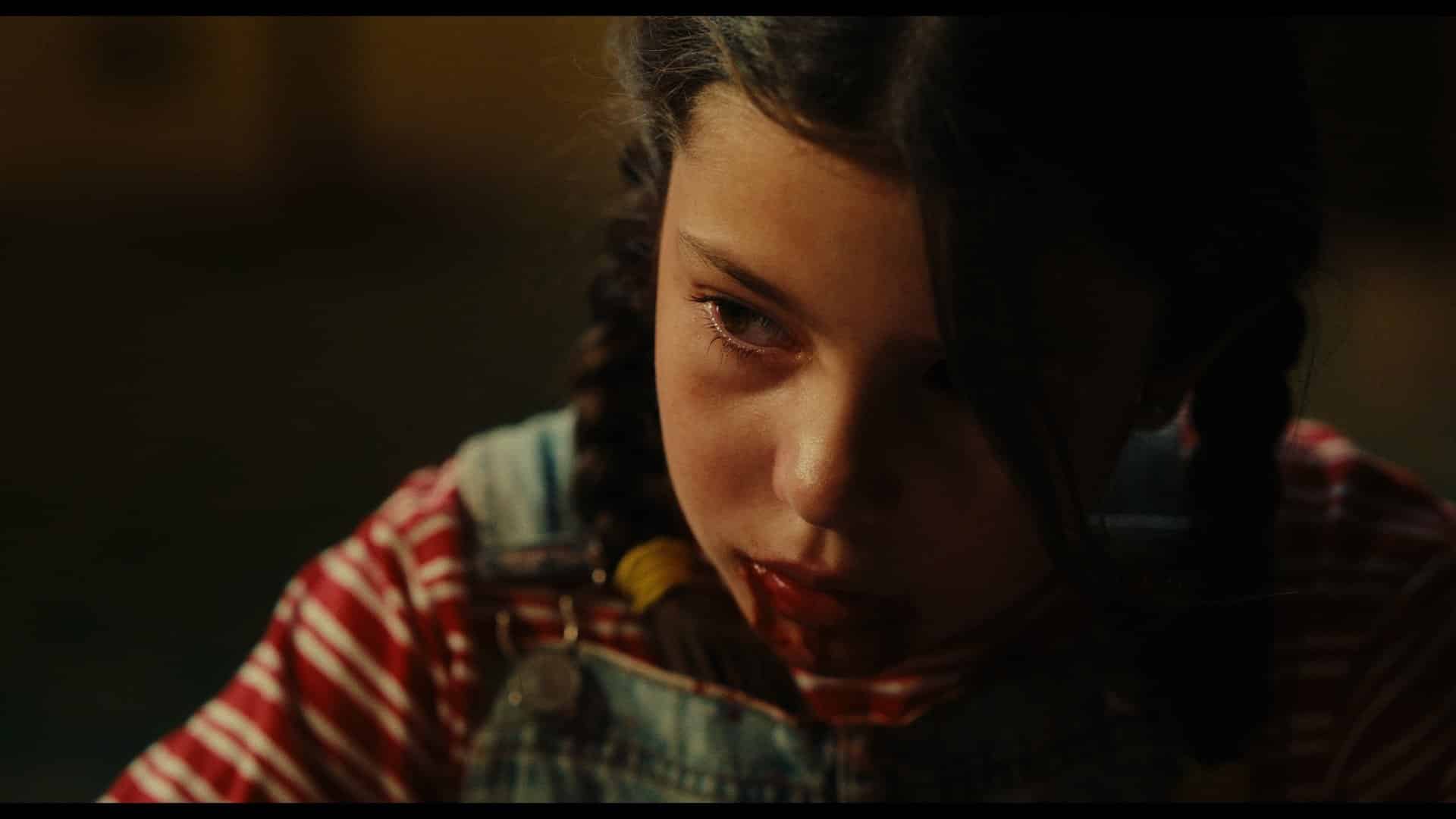My first year at Warped Perspective is coming to an end. Wow. Thanks to this site, I’ve gotten to review some absolutely remarkable films from the mainstream to the indie darling. Of these many, many titles, I wanted to select five that stood out to me: not all horror, not all feature length either, but films that brought power, messaging, strong writing, well rounded performances, and the subtle touches that lights, camera, and effects can use to bring story to life. Here is my top five list comprised of features, limited release, independent, non-horror and short films for 2023.
Everybody Dies by the End
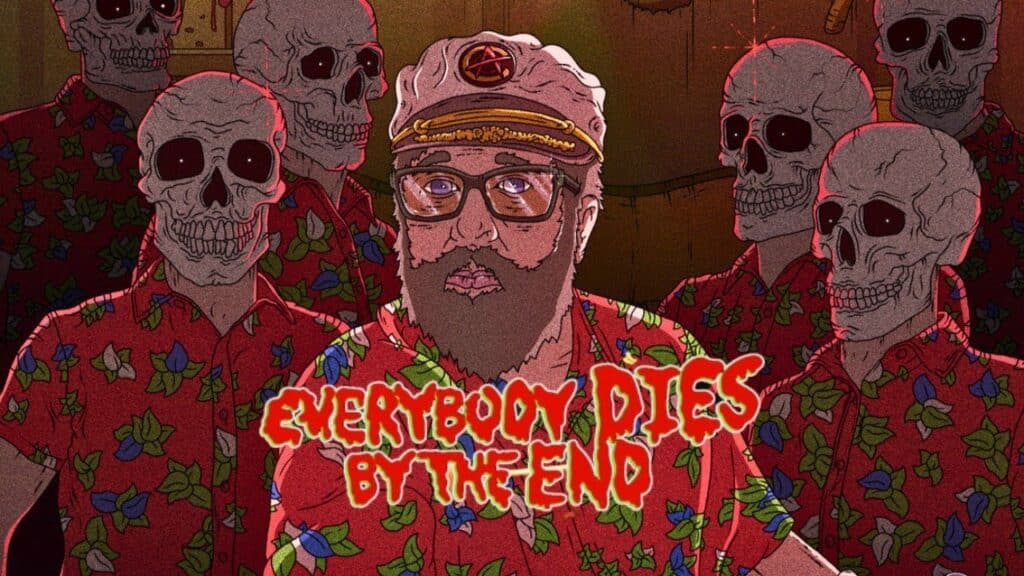
Playing to my favorite horror trick—the practical effect, Everybody Dies by the End was an indie sensation that was both hilarious and horrific and had me both gasping for breath as I laughed and gasping as I watched the blood pour. In this mockumentary feature, director Ian Tripp pulls triple duty, directing, writing, and starring in the film as the starry-eyed filmmaker following a disheveled, fallen filmmaking icon in making his magnum opus. Alfred Costella (Vinny Curran) is the high voltage splatter director that is brought down by a “gotcha” interview and spirals into a place where he ceases to make movies, until he reaches out to young Calvin (Tripp), to document the making of his new, and final, film entry, Everybody Dies by the End. This title is everything you could hope for, laced with neuroses, insanity and cult style implications.
With no special effects and limited costuming, you’d think this movie could easily be a bust with no meat to bite down on. The purpose of both Costella’s movie and Tripp’s film is to highlight the absolute magic that is the world of practical effects, making a salient point that you can make a stunning picture on nothing but a practical budget coupled with smart casting. Vinny Curran is a man on fire in this film: he is so mesmerizing, from his foul mouth to his psychedelic or simplistic ideas about how movies operate and how they should be made—especially horror. Curran is hilarious, erratic, convincing and makes you forget sometimes that Tripp is even there behind the mockumentary lens, he’s such an artistic train wreck. With shots that we’ve all seen before in our favorite horror films here on display for the production (fake knives, prosthetics, spray machines, etc.), this film is an educational breakdown of how some of your favorite shots, like the arterial spray to the face, get done.
Peppered with references to some famous, controversial directors and a storyline that doesn’t get heavy with tropes or clichés, the film gets right to the point and the title makes big promises, but it delivers. As I mentioned in my review, I have no idea where this film could have ended up if it had a Hollywood budget but stuck to its practical premise, but no doubt we would be covered in even more blood and gore. Regardless, I cannot wait until this film is more widely available to the public and I hope they see the efforts and strain that the cast and crew went through, especially the effects and casting department, to assemble a group with the right amount of chemistry and attitude to execute this indie darling and make it one of my favorite films of the year.
Renfield
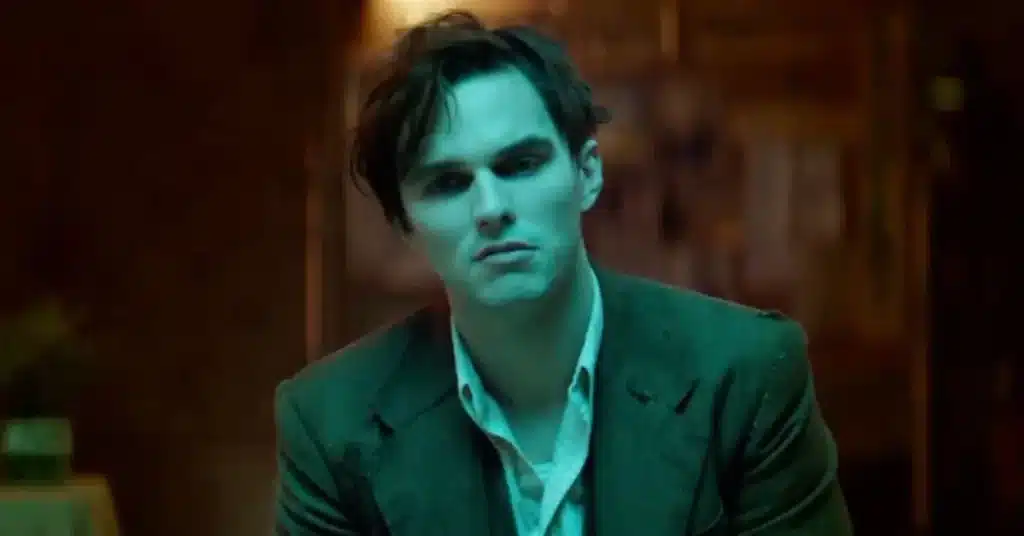
Still currently sitting at a ‘Rotten’ score on the RT-meter, when I first watched this film my expectations were low, considering the middling critic opinion. When I was through, however, I was a diehard fan of the film and ready to write a review to defend against this film’s opponents to the end. Director Chris McKay’s Renfield is the story of one of Dracula’s most famous familiars, a bug-eating servant torn straight from the pages of Bram Stoker’s novel. While paying tribute to the original beast, Nicolas Cage puts on the performance of a lifetime as the uproarious, narcissistic Dracula, dressed like a rock and roll icon down to the snakeskin boots and top hat. He vacillates between hateful and delightful, tormenting the low self-esteem of an equally hilarious Nicholas Hoult, who is shouldering the bad fashion and social instincts of the one hundred-year-old subordinate, Renfield. With an incredible cast of supporting characters (the co-dependency support group alone is a star-studded affair bubbling over with talent), the comedy, tragedy and horror are delivered with charm and terror.
From the effects to the soundtrack, nothing was overlooked to create a unique modern mood for a tale as old as time. Songs like Carmen’s Habanera highlight fight scenes and Lizzo’s music highlights some self-care montages that bring Renfield into this century. Special and practical effects budgets get blown through the roof: priests inhale Dracula’s essence and explode, severed arms are used as weapons and there are gallons of blood and pounds of cocaine. Dracula floats, turns into bats, and Renfield is his own force to be reckoned with too, providing a masterclass in hand to hand combat, once he gets a few insects in his system. Pure entertainment value.
While Renfield might not be everyone’s Dracula film, I’m happy to call it my Dracula film, especially recently. Given the presence of other films penning stories based on Stoker’s work, like The Last Voyage of the Demeter, it’s been a pick your flavor season when it comes to The Count. But, while Demeter opted to be a monochromatic work of history, right down to its own feral looking and acting vampire, Renfield is a gorgeous, colorful, modern take on the legend, with more name and budget power behind its characters. To stick with these two examples, where we have a historical drama compared with a comedy, but it all depends how seriously you want to take your vampires, and for me, lightening a historically drab and serious bloodsucking figure and adding such personality was a winning combination. All these qualities make this a story to resonate with this generation’s horror fans, with more blood and laughs than the costume dramas we are used to. Renfield’s a fresh story to this critic, and I still stand by it at the year’s end.
With Love and a Major Organ
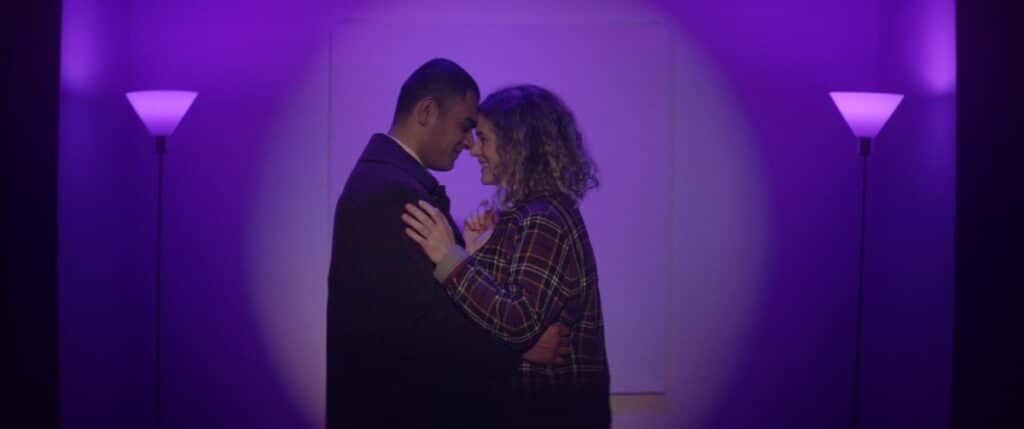
Director Kim Albright brought to the table the only non-horror film I think deserved a ranking and distinction on this list. This was perhaps the most emotional watch of the year for me, bringing heartfelt and inventive concepts to a truly well-written script from Julia Lederer. This film brought about the idea that our hearts are nearly outdated, that feelings don’t have much use in the world, and numbness is a point of pride. Anatomical hearts have been replaced by everyday objects: a paper star, a vase of flowers, whatever you believe belongs at your core. While bringing heaps of dry humor to the table to ideally balance the powerful messaging, my heartstrings were tugged as the crew put together a totally unique emotional journey through a world, somewhat like our own, that rejects human feeling.
Our two leading characters, George (Hamza Haq) and Anabel (Anna Macquire) take charge and show immense range and depth as performers. Anabel, once a very reactive, emotional and thoughtful girl, chooses to give her heart away after one too many heartbreaks, sending it to George to see what use he can put it to. As the two swap moods from George’s flat, monotone, initial representation, to his new life with an active emotional heart, Anabel becomes more the steady heartbeat while George ebbs and flows with its pulse, enjoying the world in a way he’s never experienced it before: with feeling. His childlike delight in the simplest pleasures and his gentle kindness drew tears to my eyes, reminding me that while feelings may be inconvenient, they allow us the human experience, and even a level-headed, heartless Anabel realizes her previous state was more desirable than the comfort of perpetual numbness.
Bathed in beautiful lighting to create atmospheric mood, this film is a pleasure to look at as well as listen to. Tiny shots at modern therapy or ideas such as “The Little House of Big Feelings” show how much we try to tug on the reins of our feelings and put them under control for societal betterment (or mostly just because people seem to get uncomfortable with emotion these days). Creativity abounds in this universe, supported by interesting characters and a concept I had ever seen explored. If you can get a ticket or stream, this title it is one of the most outstanding pieces of art and emotion I’ve seen this year; I found it a profound exploration of the human condition and at a modest runtime you won’t get lost, except maybe to wonder where the time has gone, as this is a truly enjoyable, moving film.
Cobweb
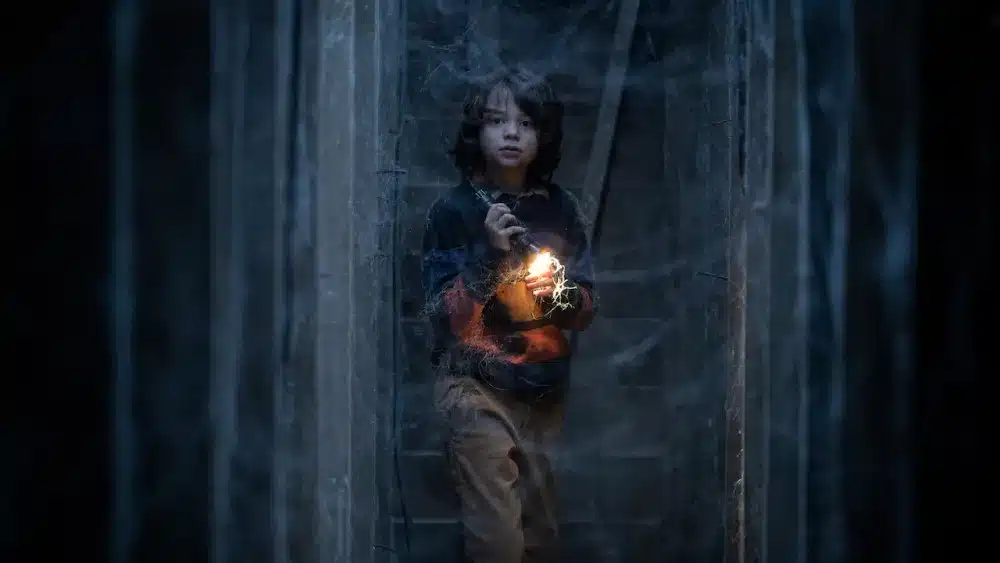
In good company with Renfield, sitting ‘Rotten’ in RT critics’ eyes (though ‘Fresh’ on the audience score), the Rotten Tomatoes synopsis cryptically reads as neither here nor there: “This itsy-bitsy horror film creeps and crawls.” Sitting on mixed reviews and derived loosely from the Edgar Allan Poe short “The Tell-Tale Heart,” director Samuel Bodin makes tip-tapping on the wall and things that go bump in the night themes which permeate this childlike tale of innocence lost. The story is of a young boy, Peter, isolated at school, misunderstood at home, that one night finds that a tapping in his wall which is not just rats scuttling about, but attached to the voice of a young girl. Now torn between the warnings of his parents and the undeniable truths being told by the child in the wall, Peter has to start acting with more bravado than he usually does, and start deciding who to trust.
Lizzie Caplan and Antony Starr are the two names that will draw the most attention on the cast bill, but I believe between Peter (Woody Norman) and Miss Devine (Cleopatra Coleman) we have our two true stars. Caplan is robotic and cold as the distant but overprotective mother, and Starr is similarly frigid and mechanical, loveless and stone faced to the very end. Peter evolves from victim, to victimizer, to unwitting pawn, being woven in and out of people’s desires for his future—or how he can play into their own. Miss Devine grows from sheepish educator to ferocious protector, acting more like a young mother, sensing and reading Peter’s signals and responding like a superhero.
While some viewers said the ending act went off the rails and Cobweb herself was silly or strange, I say – look to some of the inspiration that turned up on screen when our title… character, I’ll call her, reveals herself. With expensive special effects and an homage to Linda Blair’s spider walk, I think, despite the all-around mayhem and suspension of disbelief, Cobweb is a flexing, clawing, multifaceted character you could relate to in some ways, while still finding her perfectly unnerving and unpredictable.
With little marketing prior to a limited release in theaters across the country, coupled with competing in the same month and vein as the horror phenomenon Talk to Me, I’m not surprised that this picture, even from a large studio, went mostly unnoticed. However, with an easy runtime, a story rooted in historic fiction, with rising young actors alongside well-traveled veterans, you could stand to make room for this under-loved, but to me, one of the best value gems of the year. With tricky antagonists lurking left and right and a sliding scale of good and evil put into play, making you question which choice of life for Peter is worse, you’ll be searching for a lifeline through the whole movie while deciding which character you have the most trust issues with. Certainly, a creepy, crawly little movie, let it wrap its limbs around you and tell you a modern version of a familiar favorite.
Sweet Tooth (short)
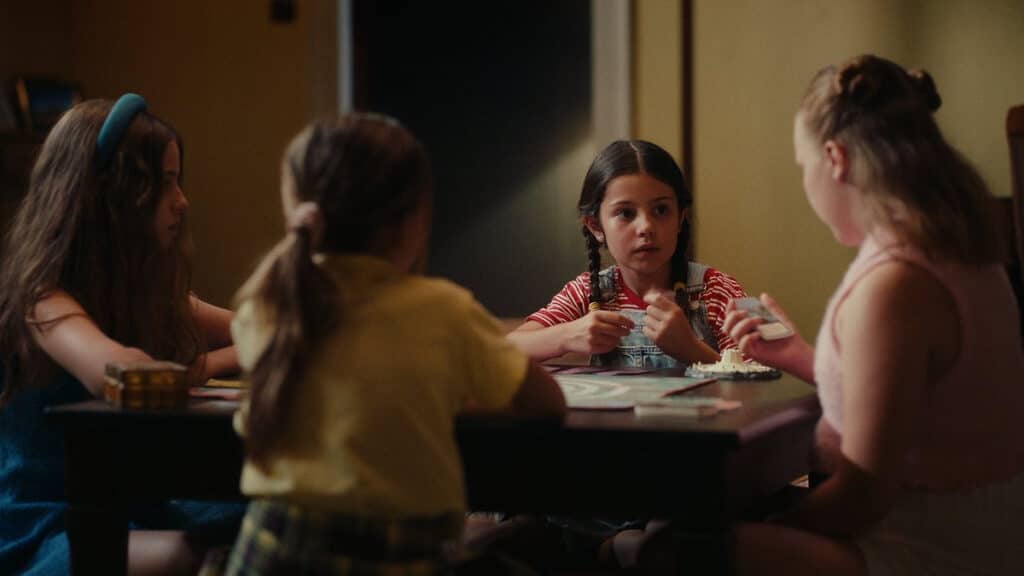
The cruelty of girls is unmatched and in Sweet Tooth we find a perfect tale of treachery battling against us with claws and teeth. Director Josephine Darcy Hopkins creates a testament to the infighting in the female gender and how early an age it begins, with stars Lou Deleuze as Madeleine and a returning favorite from another short film favorite of mine, Transylvanie, Katell Varvat. Madeleine is a young, lower middle-class girl on a work trip with her mother who does spa treatments for the wealthy. Shuttled away to the basement, she finds a group of similarly aged girls playing, led by the shark-eyed Eugenie (Varvat). “The Queen’s Game” is to occupy provinces in a kingdom and reach the center castle by paying in and taking turns. However, there’s a nasty price to pay to get into this circle and the game isn’t free either. These privileged girls are playing with real money, and Madeleine will have to find value in anything she has to offer—how gruesome this gets, you’ll need to see for yourself.
Soft lighting, pastel colors, the delicate crust on a sweet cherry pie; the visuals in this glamorous little piece are stunning and create a childlike ambiance while leaving room for savagery. Varvat is a star, I’m already convinced, confident beyond her years and delivering a cruel but compelling role as the antagonist. All those starring did everything they needed to in order to make this feel like a trap for poor Madeleine, pushed away from the grownups, painfully isolated amongst her peers. This atmospheric lesson on how far bullying can go and the extent of the will of an underdog makes for a tense watch that builds to a satisfying finish, that goes down like just desserts.
